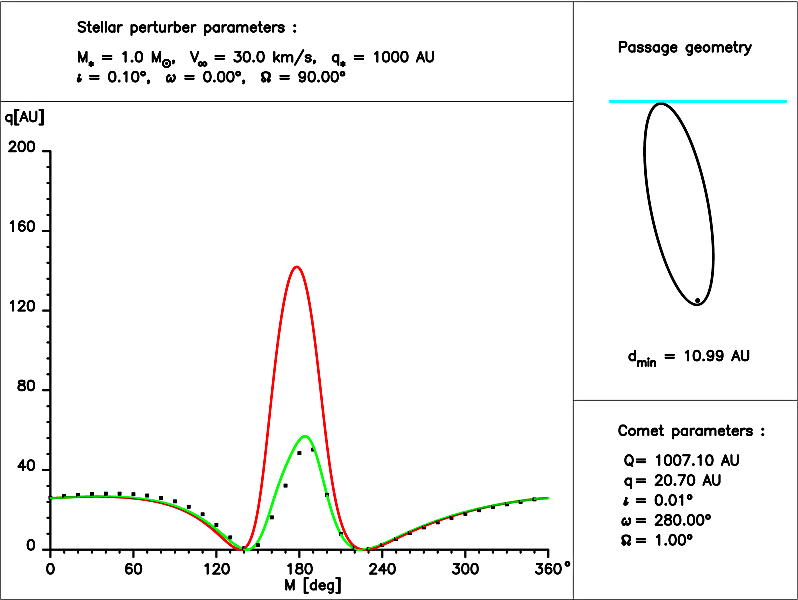![]()
The material presented here was included as appendix in the poster P13.1: "Recent stellar perturbers of the Oort cloud and their simulated output", presented at the ACM'2005 meeting in Buzios, Brasil, August 7-12, 2005.
The body of this poster was recently published in A&A (preprint is here).
![]()
Piotr A. Dybczyński
ADVERTISEMENT :)
(On the superiority of the improved impulse approximation over the clasical one)
 Fig.5.
Fig.5.
In all Monte Carlo simulations we used the 'improved impulse approximation' (Dybczyński, 1994) as a method of calculating change in cometary orbit caused by a close stellar passage. Recently several authors calculated similar effect when searching for explanation of a very large value of the perihelion distance of recently discovered Kuiper Belt object Sedna. Some authors still use the classical impulse approximation. At this occasion we would like to show again the advantage of the improved method by presenting two examples of calculation of the perihelion distance change of proto-Sedna like object as a result of a close stellar passage. These examples are presented in Figs. 5 and 6.
 Fig.6.
Fig.6.
In both cases the main plot shows the final perihelion distance of the proto-Sedna in dependence of the initial mean anomaly of the proto-Sedna at the moment of the stellar passage. The red line shows results from the classical impulse approximation, the green line shows results of the improved variant and black boxes represent the results of the exact numerical integration. The advantage of the improved impulse approximation over the classical one is evident and this approximation is still 500 times faster than the numerical integration. Right-hand plots in each of this figures show the geometrical orientation of the proto-Sedna orbit (black ellipse) with respect to the star path (blue line). The minimum distance between the star and the proto-Sedna is also presented. Note that both examples are almost planar.
The postscript versions of the above FIG.5 and FIG.6 are also available for download.
Acknowledgement: The important starting impetus to check the validity of the impulse approximations in the 'Sedna case' was provided by Dr. Małgorzata Królikowska.